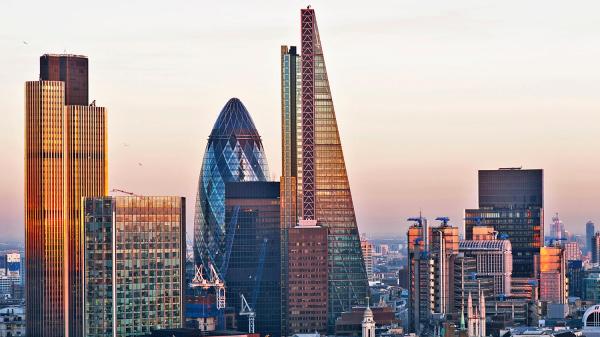London
London is the capital city of England and the United Kingdom and one of the leading global cities. The River Thames runs through the centre of London, which has been a major settlement for more than 2,000 years, since Londinium was founded by the Romans.
London can also be defined as Greater London which is a conurbation which forms the administrative boundaries of London. It covers 607 sq. miles and has a population of 8,787,892 (as of 2016). Greater London consists of 33 local government districts – 32 boroughs and the administrative and financial centre of the City of London.
The Greater London Built-Up Area (also known as the Greater London Urban Area) refers to the continuous urban area of London and surrounding urban towns. This has a population of 9,787,426 (as of 2011).
The London Commuter Belt refers to the metropolitan area comprising London and its surrounding commuter zone (most of the South-East and part of the East of England). As of 2016, the population was approaching 14,500,000. However, the boundaries of this area are flexible as transport infrastructure improves, housing provision increases, and more people are able to travel in and out of London to work.
London is the seat of the national government of the United Kingdom. The Minister of London (a cabinet position created in 1994) is currently Jo Johnson MP.
London’s administration is made up of a number of bodies:
- Greater London Authority (GLA): Responsible for strategic local government. Consists of the elected Mayor of London (who has executive powers) and the London Assembly (which scrutinises the Mayor).
- City of London Corporation: Responsible for the local government of the City of London.
- Smaller authorities: Local administration is carried out by the 32 boroughs.
The London Plan is a statutory strategy required by the Greater London Authority Act 1999. It is prepared by the Mayor of London and published by the Greater London Authority. The latest edition was published in March 2015. The London Plan is a spatial development strategy setting out an economic, environmental, transport and social framework for the development of London to 2036.
Designing Buildings Wiki has a range of articles relating to London, including:
- 25 best buildings in London.
- A city for all Londoners.
- Accessible London.
- Draft London Housing Strategy.
- Draft London Plan.
- GLA Housing Design SPG.
- Empty housing in London - documentary.
- Greener City Fund for London.
- Infrastructure under Mayor Sadiq Khan.
- London infrastructure plan.
- London Land Commission.
- London View Management Framework.
- Making the Green Belt work for London.
- Metropolitan open land (MOL).
- Response to Mayors consultation document.
- Strategic industrial locations (SILs).
- Supplementary planning guidance.
- T-Charge.
- The future of the green belt.
- The London Plan.
- Ultra Low Emission Zone.
Designing Buildings Wiki has a range of articles relating to buildings and structures in London, including:
- 2 Willow Road.
- 10 Downing Street.
- 20 Fenchurch Street.
- 30 St. Mary Axe.
- After the Fire: London churches in the age of Wren, Hooke, Hawksmoor and Gibbs.
- Architecture of Tooting.
- British Museum.
- BT Tower.
- Battersea Power Station.
- Buckingham Palace.
- Buildings of Westminster.
- City Hall, London.
- Container City.
- Dennis Severs house.
- Heathrow Terminal 5.
- Leadenhall building.
- Lloyd's of London.
- London 2012 Olympic Stadium.
- M by Montcalm.
- Millennium Dome.
- National Theatre.
- NatWest Tower.
- Nuclear Dawn mural, Brixton.
- One Canada Square.
- One Hyde Park
- Palace of Westminster.
- Royal Albert Hall.
- SIS Building.
- St Pauls Cathedral.
- Stamford Bridge stadium.
- Thames Barrier.
- The Livery Halls of the City of London.
- The Shard.
- Trellick Tower
- Walters Way and Segal Close.
- Welbeck Street car park.
- Wembley Arena.
- Wembley Park.
- Wembley Stadium.
[edit] Related articles on Designing Buildings Wiki
Featured articles and news
Latest Build UK Building Safety Regime explainer published
Key elements in one short, now updated document.
UKGBC launch the UK Climate Resilience Roadmap
First guidance of its kind on direct climate impacts for the built environment and how it can adapt.
CLC Health, Safety and Wellbeing Strategy 2025
Launched by the Minister for Industry to look at fatalities on site, improving mental health and other issues.
One of the most impressive Victorian architects. Book review.
Common Assessment Standard now with building safety
New CAS update now includes mandatory building safety questions.
RTPI leader to become new CIOB Chief Executive Officer
Dr Victoria Hills MRTPI, FICE to take over after Caroline Gumble’s departure.
Social and affordable housing, a long term plan for delivery
The “Delivering a Decade of Renewal for Social and Affordable Housing” strategy sets out future path.
A change to adoptive architecture
Effects of global weather warming on architectural detailing, material choice and human interaction.
The proposed publicly owned and backed subsidiary of Homes England, to facilitate new homes.
How big is the problem and what can we do to mitigate the effects?
Overheating guidance and tools for building designers
A number of cool guides to help with the heat.
The UK's Modern Industrial Strategy: A 10 year plan
Previous consultation criticism, current key elements and general support with some persisting reservations.
Building Safety Regulator reforms
New roles, new staff and a new fast track service pave the way for a single construction regulator.
Architectural Technologist CPDs and Communications
CIAT CPD… and how you can do it!
Cooling centres and cool spaces
Managing extreme heat in cities by directing the public to places for heat stress relief and water sources.
Winter gardens: A brief history and warm variations
Extending the season with glass in different forms and terms.
Restoring Great Yarmouth's Winter Gardens
Transforming one of the least sustainable constructions imaginable.























